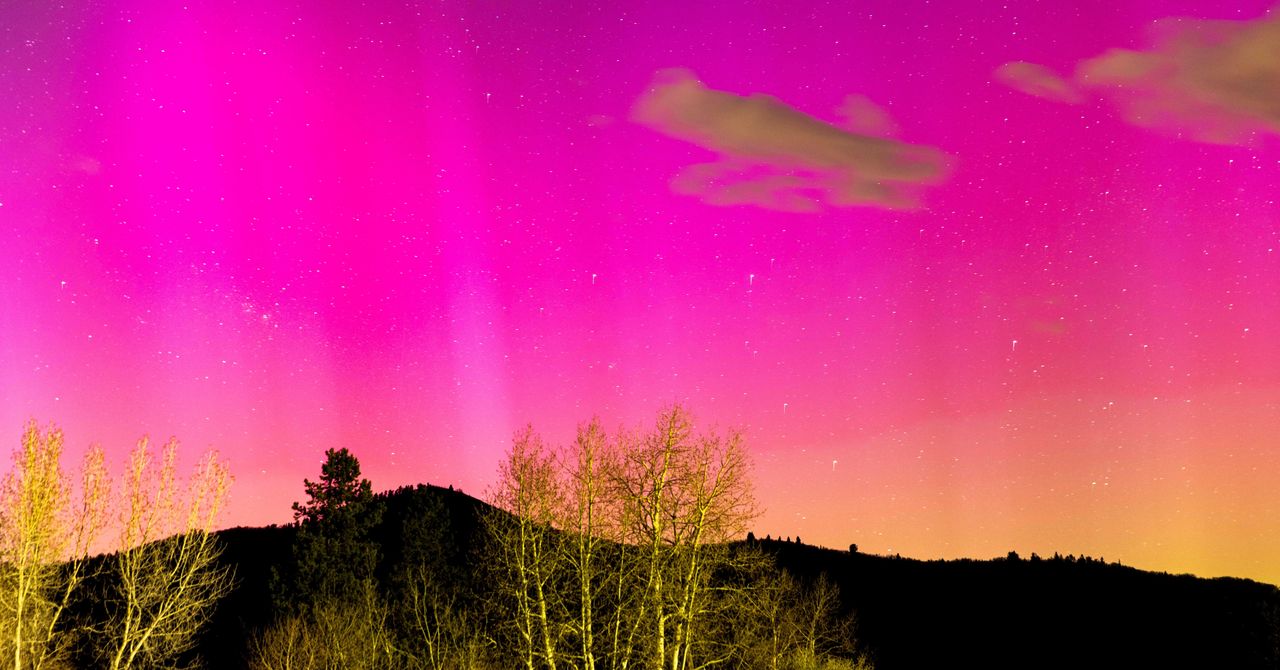
Neon lights are glass tubes containing neon or other gases. When an electric current is sent from one end to the other, the flowing electrons collide with the electrons in the neon, bumping them up to a higher energy level. When those electrons calm down and fall back to the ground state, they emit light. The color depends on the specific change in energy, which means that different gases, like argon, xenon, or mercury, produce different colors.
For the northern lights, it’s not neon but the gases in the atmosphere. Oxygen gives off a green light at lower altitudes and red at high altitudes. Nitrogen produces a blue or purple light. Yellows and pinks result from mixtures of gases and usually occur in only the heaviest solar storms. These gases are excited by a combination of high-energy charges from the sun and the Earth’s own fluctuating magnetic field, which give these particles an extra boost, creating more energetic collisions.
Wait, so Earth’s magnetic field is changing too now? Yep, and this is caused by the solar wind itself. Just as moving charges experience a force in a magnetic field, they also create their own magnetic field. When there’s a deluge of charged particles raining down on us, the Earth’s field gets bent and distorted. That causes it to wiggle around and leads to those impressive light shows in the sky.
Another fun fact: The aurora is present in the daytime too, you just can’t see it.
What’s Not to Like?
Unfortunately, space weather isn’t just pretty lights. For any humans in space, like in the International Space Station, or even in high-altitude aircraft, these fast-moving charged particles are an unwelcome blast of radiation. In this case, it would mostly be beta radiation, but it’s possible to get some alpha particles, too. (Here is your radiation refresher.)
It’s also hard on satellites. A charge buildup can damage electrical components that are needed for a satellite to do its job (whatever that might be). Also, as the Earth absorbs more solar energy, the atmosphere heats up, causing it to expand. This increases the drag on spacecraft in low Earth orbit, causing them to slow down. Bottom line: Satellites could run off course or fall out of the sky.
Services Marketplace – Listings, Bookings & Reviews
